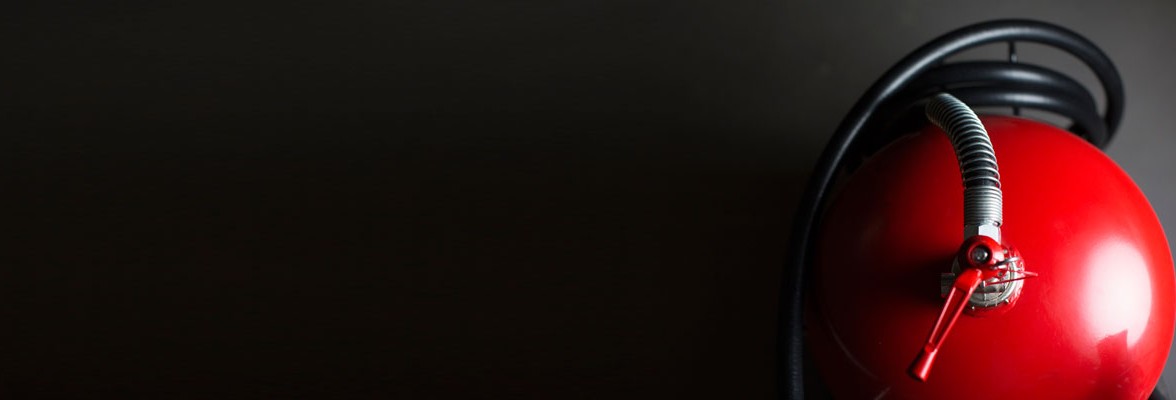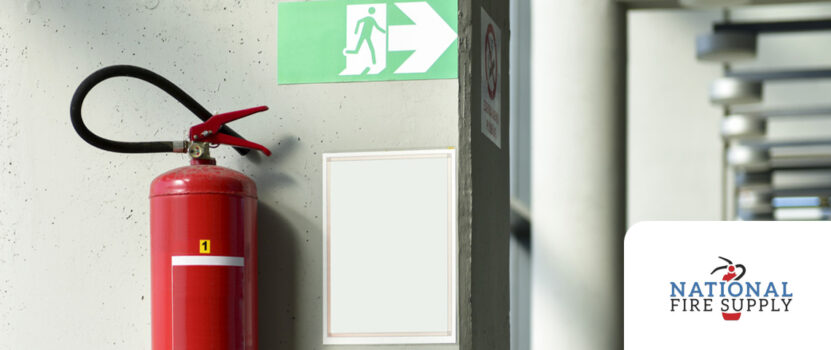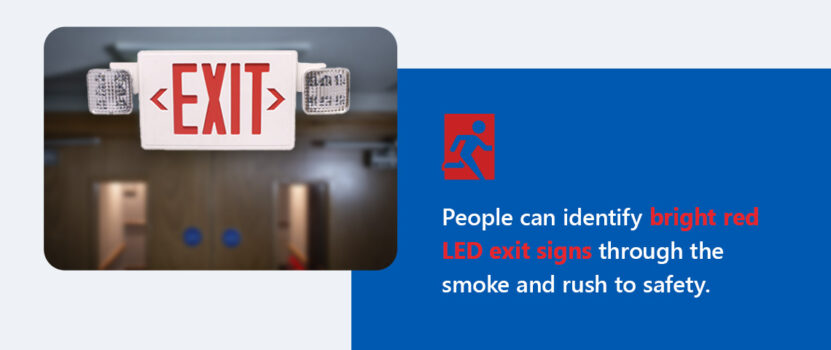YOUR CART
- No products in the cart.
Subtotal:
$0.00


Fire safety equipment saves lives and business livelihoods. Equipping properties and staff with the correct equipment is vital for adequate fire control.
Ensuring essential equipment is on the property is at the core of business fire safety. Fire extinguishers can effectively suppress most flames when they start. Employers must provide employees with portable, readily accessible fire extinguishers under regulations from the Occupational Safety and Health Administration (OSHA).
Companies should mount fire extinguishers and make them easily identifiable. They should also ensure they have the right type for the possible fire risks. Here are the main classes and their uses:
We stock several types of fire extinguishers, from multipurpose or ABC extinguishers to dry chemical options, with or without wall hooks. We can help you select the proper fire extinguishers for your business needs. For example, restaurants mainly need Class K types, while offices may benefit from an ABC extinguisher to cover all bases.
Fire prevention in the workplace isn’t always possible to avoid, especially in environments like restaurant kitchens where oils can easily set ablaze. However, installing fire alarms and detectors helps employees act fast to prevent the fire from growing.
Fire alarms and detectors ensure workplace fire safety by allowing timely evacuations. Interconnect all systems for simultaneous alerts throughout the building during a fire.
Heat detectors are necessary in areas with high dust or steam. They alert employees of a rise in temperature caused by fires. Photoelectric sensors are effective for detecting smoldering fires, and ionization detectors pick up fast-flaming fires.
Many companies use manual pull stations because they’re beneficial if an employee discovers a fire before the smoke detectors. They can be especially helpful in laboratories and areas where solo work is frequent. The quick response ensures that employees can evacuate before the fire spreads rapidly.
The National Fire Protection Association (NFPA) outlines the guidelines to ensure the pull lever is accessible to all. The operable part needs to be between 42 to 48 inches above the finished floor. At least one pull station must also be within 5 feet of every exit on each floor.
Place heat detectors and fire alarms on the ceiling and make them as central to the room as possible. Smoke rises before it spreads, so keeping the detectors central aids in quicker sensing.
To meet compliance with the fire code, certain businesses, like restaurants or labs, must implement fire suppression systems to keep employees safe from fires. Sprinkler systems are a common way to do this.
OSHA requires employers to maintain their sprinklers by performing a main drain flow test annually and opening the test valve every two years. You should also choose the right sprinkler system type for your business needs. They come in two primary forms:
Install a sprinkler water system gauge to ensure an adequate amount of pressurized water or air.
Other types of fire suppression systems used in various businesses and settings include:
In a fire emergency, smoke fills the air, affecting visibility. It’s difficult for people to find exit signs. When fires start, people may also panic and forget where important equipment like fire extinguishers is. Emergency lighting and signage are critical for fire safety, especially in commercial buildings.

People can identify bright red LED exit signs through the smoke and rush to safety. The lights must have a battery backup, as electricity might go out in the event of a fire. These lighting fixtures also provide illumination in areas like stairwells, which might prevent falls due to poor visibility.
Wall-mounted fire extinguisher arrow signs help employees quickly identify vital equipment, even in a state of panic. The huge arrow and bright red color stand out. Place these signs above or just beside the fire extinguisher.
Fire doors and barriers are essential fire safety equipment for certain businesses, such as industrial facilities. These areas are at high risk of rapid fires due to their machinery and highly flammable equipment. Fire doors section off the fire areas, acting as barriers. They allow employees to evacuate safely.
These doors and barriers are made of fire-prevention materials that minimize damage outside the contained area and slow the fire until firefighters get to the scene. By reducing overall damage, fire barriers also protect business operations and help things return to normal sooner.
A comprehensive evacuation plan prepares employees to keep themselves safe during various emergencies, such as natural disasters and fires. It’s important for companies to provide employees with proper evacuation training where they cover the following:
It’s essential to check your equipment regularly to ensure that it’ll function appropriately in the event of an emergency. According to the NFPA, fire extinguishers must be inspected once a month and more often in areas prone to rust or tampering. You can create a checklist to ensure the following items are checked routinely:
To inspect smoke alarms, you can use a specialized smoke detector tester to check that they will go off in case of a fire. Use it in battery mode when checking emergency lighting, as electricity may be out during a fire.
Having all the right equipment is only beneficial if employees know how to use it. Providing fire safety training for fire extinguishers helps meet the business requirements for fire safety readiness.
An essential part of training is fire drills. Companies should alert employees of days when fire drills will be helpful. This training allows them to practice evacuation routes, equipment use and other safety functions. They’ll be a bit calmer in an actual fire because they’ll know what to do, ensuring they don’t act dangerously out of panic.
At National Fire Supply, we have the equipment to prepare your property for fire safety. Serving our customers by providing quality fire safety equipment is our top priority. We are NAFED (National Association of Fire Equipment Distributors) certified. Our expert staff is ready to answer your questions and advise you on the best products.
We have a wide range of equipment, including fire hose reels and extinguishers. We offer free two-day express shipping and same-day shipping for smaller parts for specific equipment. Feel free to reach out to us, visit our store in Washington, or shop our products online.